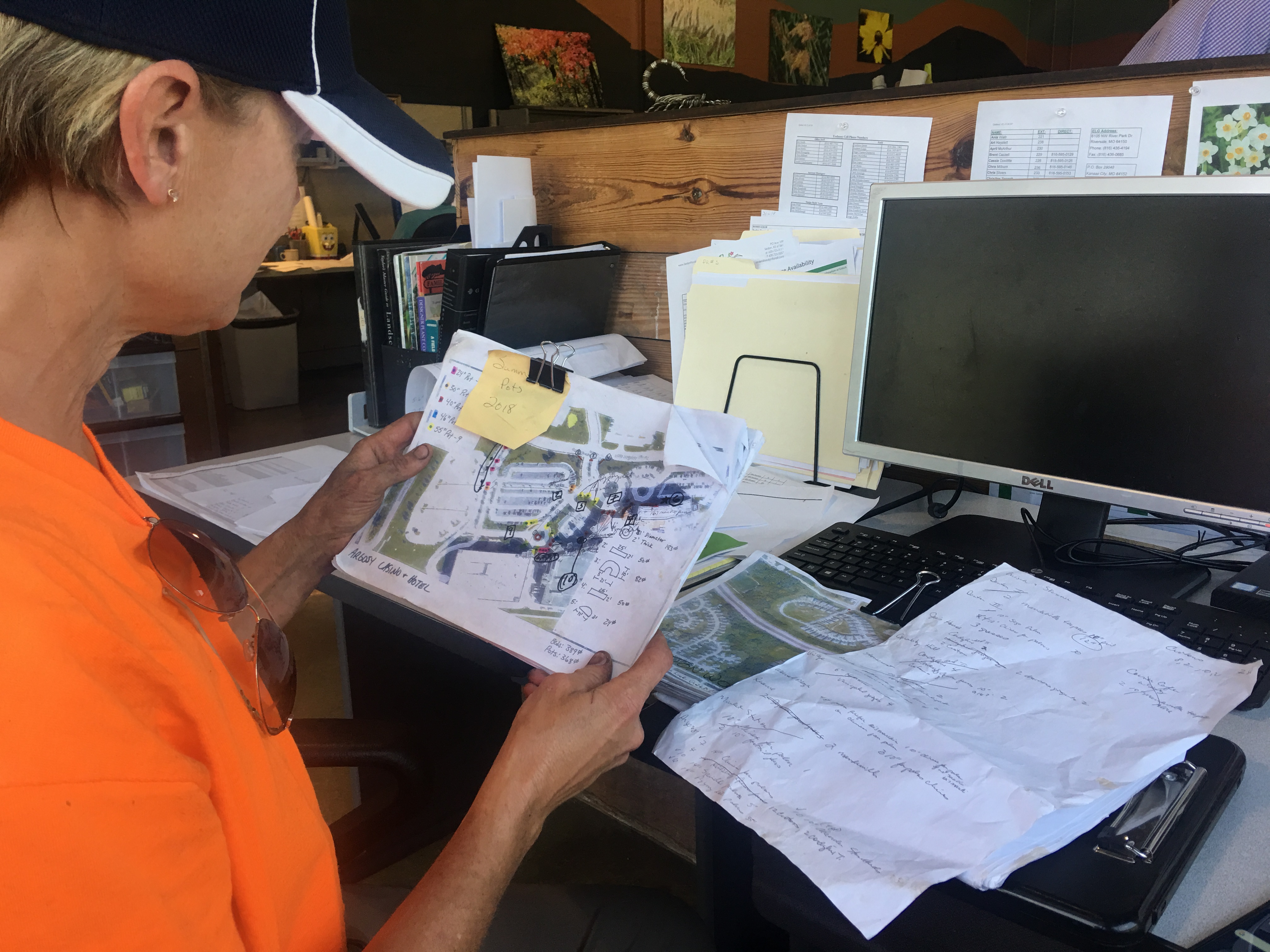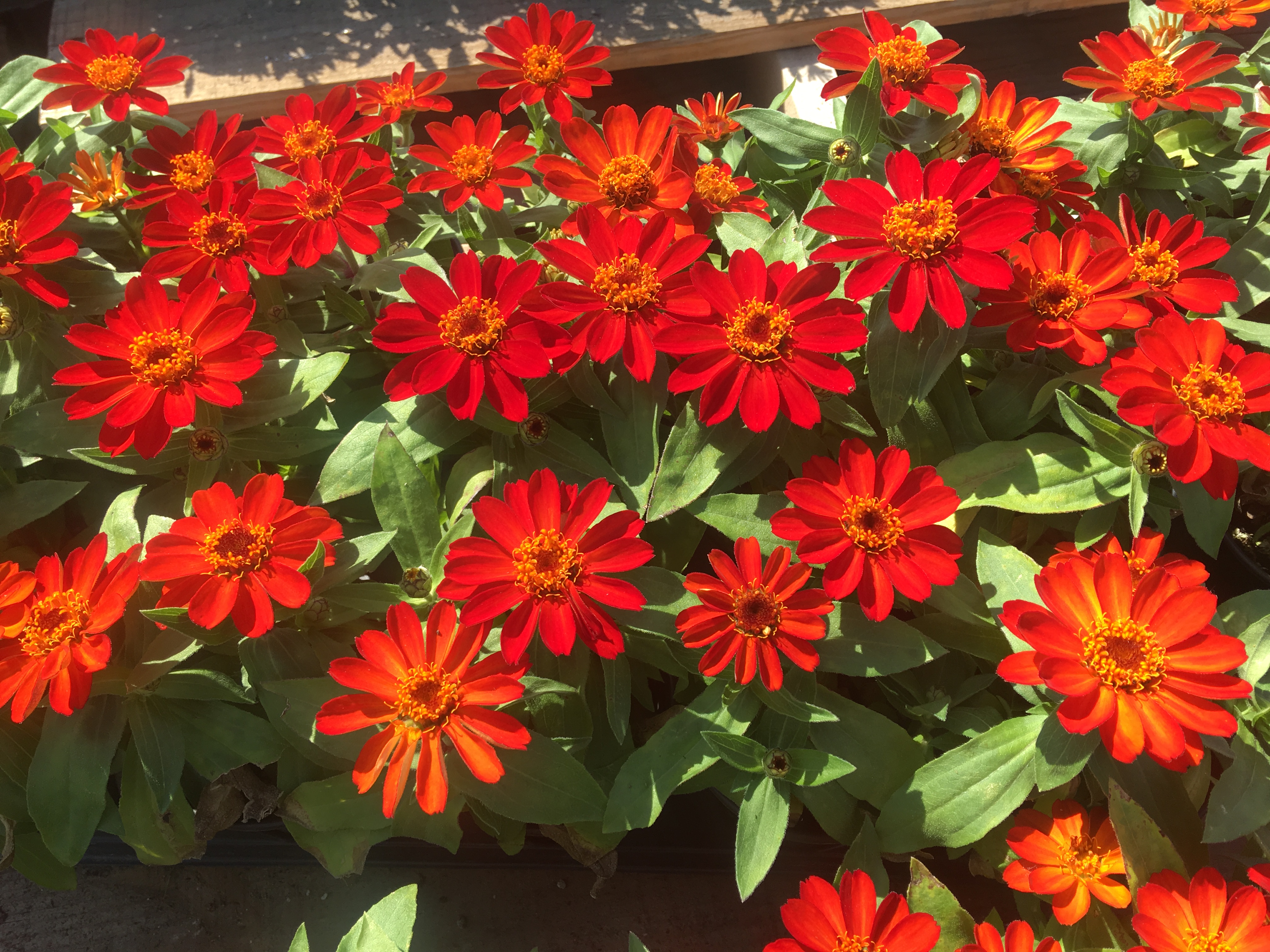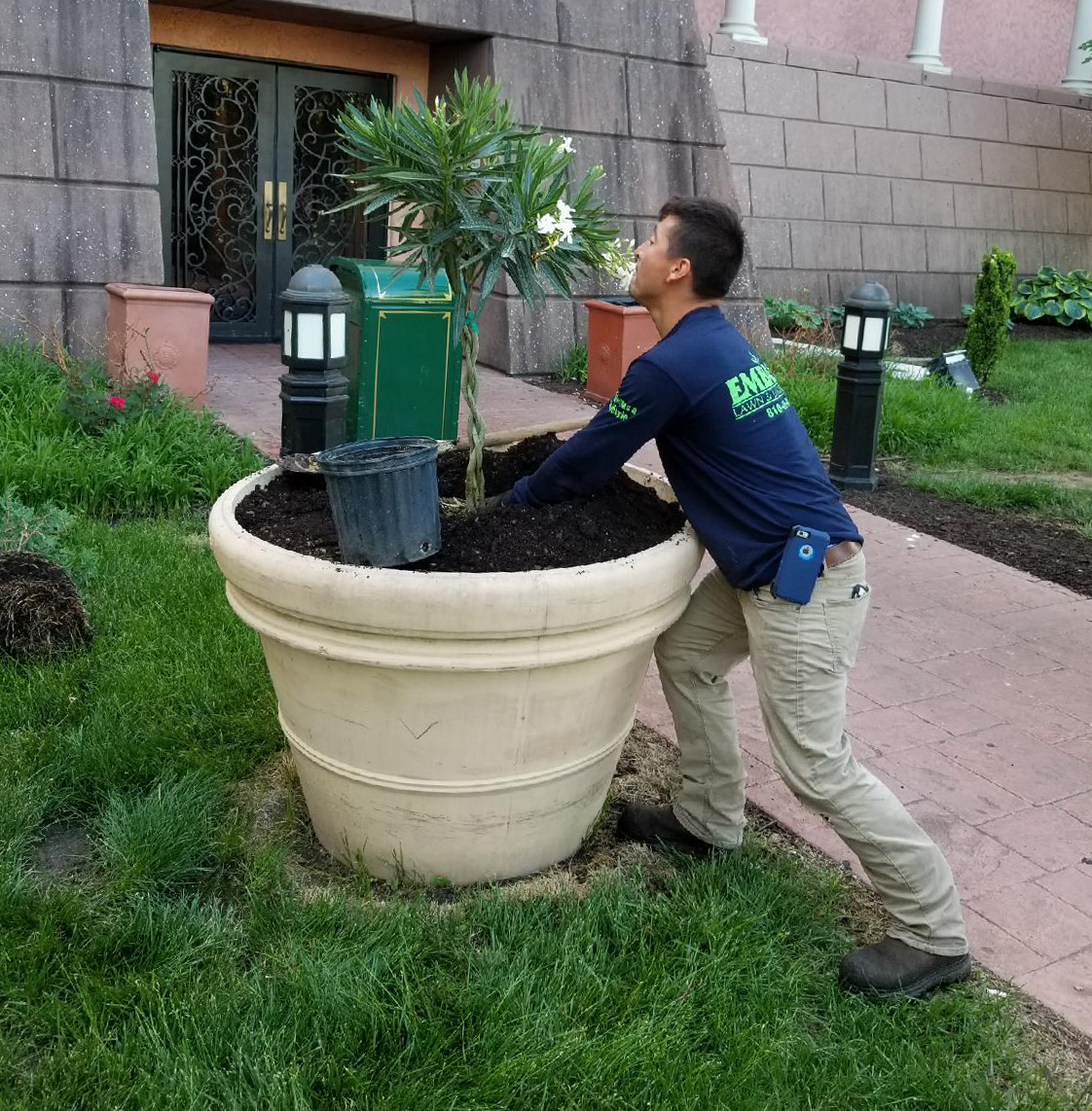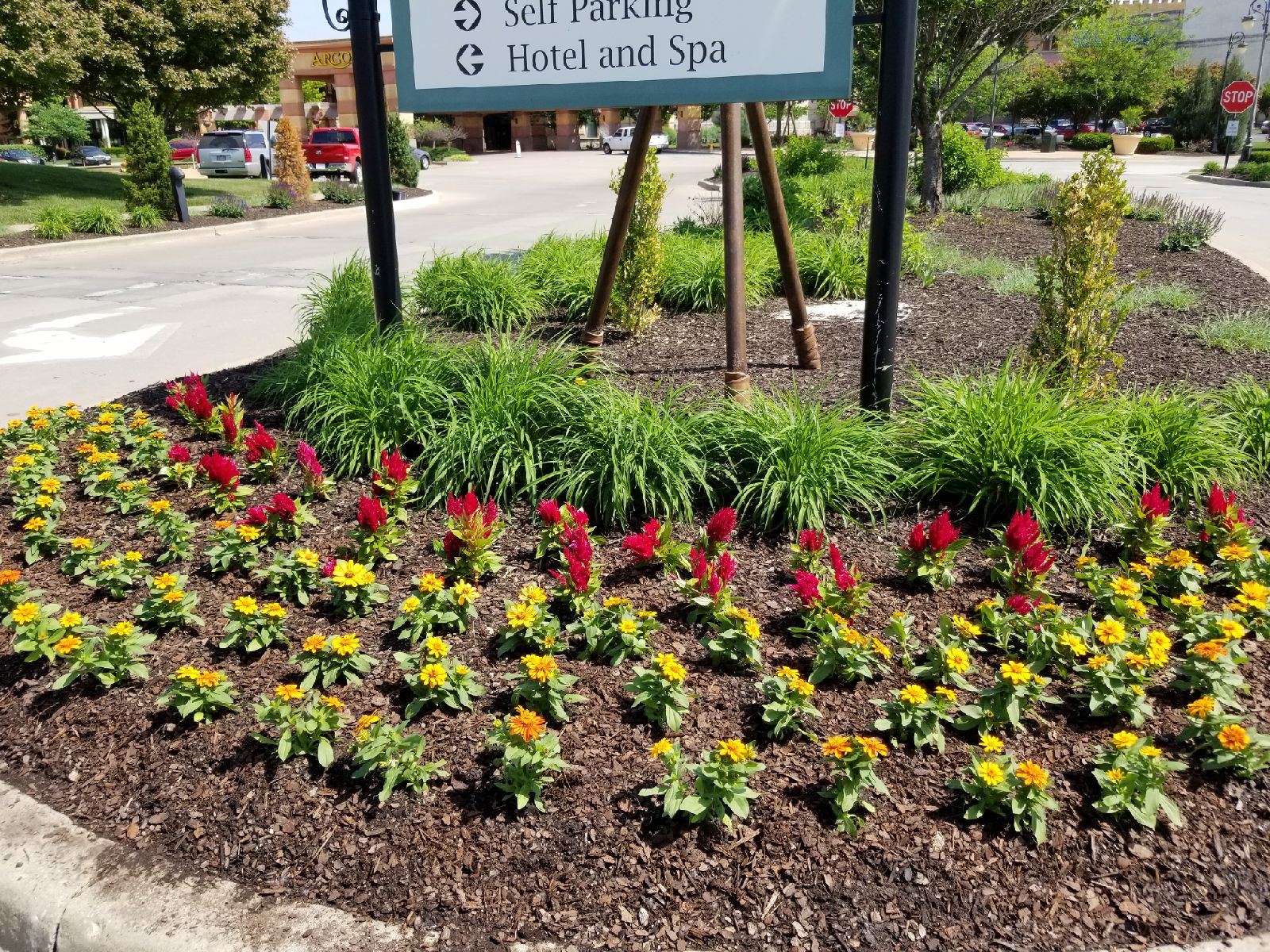I have to admit that when I was a beginning gardener I ( more than once) designed my annual flower beds based on ideas I “borrowed” from one of the flower beds in front of a restaurant I frequently visited. Even though it was in the blazing hot sun by a concrete sidewalk, it was always striking. It was obvious that whomever had designed and installed it really knew plant material and design elements.

I never did find out who had designed that bed, but in the years since then I have found myself judging flower beds on commercial properties against my memories of that one. Many I see are attractive and hold up well in the harsh Midwest summers, but the ones that are designed and installed by Embassy Landscape Group are always outstanding.

Instead of just admiring their beds from afar, this time I decided to get some “trade secrets” from the design and installation experts at Embassy. Even though they are in the height of their busy season, Joann took the time to explain their processes and answer my questions.

Every year I begin dreaming about my flower beds in midwinter. I flip through magazines and imagine color schemes, but the reality is that nothing is really determined until May, when I step foot in a garden center and peruse the available choices. My beds then flow out of what appeals to me at the moment. This undisciplined approach has resulted in some VERY interesting gardens over the years and obviously wouldn’t work on a commercial scale.

Designers of commercial beds have to be much more structured in their approaches. Planning for summer flowers actually begins the winter before. Commercial designers first must assess the conditions in each bed. Will the bed sit in full, hot sun or be in deep shade? Is the bed adjacent to a sidewalk, parking lot or street? Is there signage that cannot be blocked? Is it likely to have foot traffic through it? What type of watering system will be available?

After assessing conditions, commercial designers begin considering appropriate varieties and color schemes. Customer preference and budget help control these aspects, but often the designer is free to make the final decision. Extensive knowledge of plant material is necessary to make the best, most appropriate selections for each bed’s environment. More than just what new colors are available, designers need to understand what improvements have been made in each new cultivar. Is it more resistant to disease, or is the plant more drought tolerant? Is it suitable for a container? How will it tolerate the tough environment of a parking lot?

This year, Joann has selected a few floral combinations that she thinks will be particularly outstanding. She recommends orange zinnias, especially the zahara series, and purple salvia for a striking full sun show. For a little more subdued but still dazzling combination she suggests pastel shades of vinca paired with raspberry and purple Angelonia. Finally, she is using a tried and true combination of red zahara zinnias and Taishan yellow marigolds. All beautiful combinations worth imitating.

Instead of heading to the garden center to examine and then purchase plant material, commercial designers place specific orders with their favorite growers. Not only are varieties, colors and numbers specified, but exact sizes of each are ordered as well. Of course ordering in massive quantity assures a better price than retail, but, barring any disasters, also guarantees that the plant material will be available when it is needed.

This season, Embassy holds seasonal color contracts for over 100 properties. In order to fill those beds, the maintenance department has purchased literally thousands of bedding plants so far this year.

Designing the beds and purchasing the plants are only the beginning steps in the creation of beautiful beds. The care that go into planting are also part of Embassy’s success story. Each planter and bed is thoroughly cultivated before planting. Beds are machine tilled to break through the crusty surface and to loosen the soil while planters are worked by hand. The loosened soil allows for better root development and gives the plants easier access to water, resulting in less wasteful water run-off. Compost is always added to enrich the soil and to improve its ability to drain water. Because of Embassy’s commitment to environmentally sound practices, no chemical fertilizer is added at planting. Instead, throughout the growing season, crews add two applications of Embassy’s 100% organic liquid soil amendment. (For more information on their organic approach, please see our March 14th blog.)


While the beds and planters are being prepared, Joann reviews the plan she created much earlier in the year and selects the best material from Embassy’s holding area.


At the job site. plants are laid out before any planting begins, making it easy to do any necessary modifications before any plants are in the ground. Typically, 4 inch plants are placed 6 to 8 inches apart to give a satisfying burst of initial color while still leaving space for healthy growth throughout the summer. The beds are mulched to help prevent weeds and given a deep watering to help the plants settle into the ground. The precise planning and thorough preparation pays off; the results are amazing!



Having a wealth of knowledgeable staff who share an appreciation for beauty, concern for the environment and attention to detail is what sets Embassy Landscape Group apart from other landscaping companies. Contact them today and let them transform your surroundings from ordinary to extraordinary.
